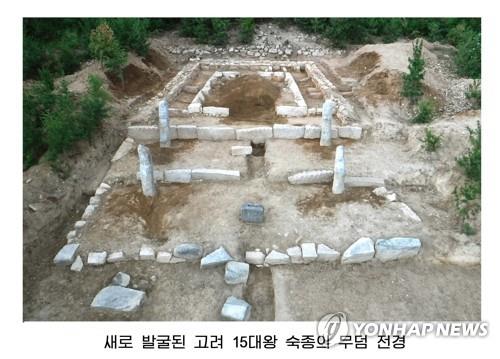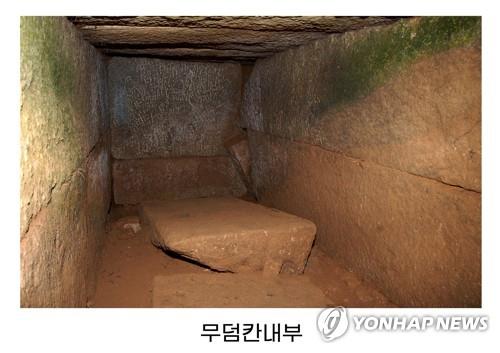North Korea said Saturday that its archaeologists have discovered a royal tomb of the Goryeo Dynasty (918-1392) in its border city of Kaesong.
According to the Korean Central News Agency (KCNA), the mausoleum of Suk Jong, the 15th king of Goryeo who was born in 1054 and died in 1105, was found recently in Sonjok-ri of Kaesong, the ancient capital of the dynasty.

"A research group of the Korean National Heritage Preservation Agency, together with researchers of the Global Environmental Information Institute of the State Academy of Sciences, analyzed the space distribution features about the places in which mausoleums of the kings of Goryeo might exist and succeeded in finding out the exact location of Suk Jong's mausoleum," the KCNA said in an English dispatch.
"In union with researchers of the National Heritage Preservation Office in Kaesong City and Goryeo Museum, they conducted excavation in Sonjok-ri for over 20 days from last May to June to find out his mausoleum," it said.

The size of the mausoleum, located in the middle of a somewhat low slope area on a mountain, is 29 meters long north-south by 13 meters wide west-east, the agency said, noting the tomb has three sections, which are divided by four west-east embankments.
Suk Jong was the third child of Mun Jong, and his original name was Wang Ong. He reigned for a decade from 1096 to 1105. The name of Suk Jong is his posthumous one.
"The Archaeology Society of DPRK ascertained that the heritage was the mausoleum of Suk Jong. It is of great significance in making clear the developed culture of Goryeo," the KCNA said.
The DPRK stands for the Democratic People's Republic of Korea, and Goryeo is written as Koryo in English in North Korea. (Yonhap)

